Hello and welcome :) Grab a cup of something hot (or iced, since it’s about 1000 degrees out) and settle in for some historical fashion exploration and appreciation.
It’s been a bit longer between newsletters than I had originally planned, but thank you for sticking with me. There are some fun and interesting things in the works I can’t reveal just yet, but hopefully within the next few weeks I’ll be able to share some details with you!
Sleeeeeeves
For this next topic, I thought it would be fun to look different styles of sleeves that were popular from 1900 to 1910 and share some of the research resources I have used to help date the pieces in my shop.
I adore the 1890s—and the fabulous sleeves that came out of that glorious decade of fashion—but lately I have been having some serious appreciation for Edwardian era sleeves.
Yes, I realize there are debates about how to properly use the term “Edwardian,” and while I like to educate myself and others on the proper use of terminology, I’m also not a stickler. I use the term a bit more loosely because I recognize there is a broader understanding of what it means.
Technically, the Edwardian era refers to the reign of the British monarch Edward VII (1901–1910), though some extend it to 1914 or the start of the First World War.
A couple of additional notes before we get started…
I am going to focus on the general trends of the sleeves on women’s shirt-waists or bodices in Western fashion.
For this I will be using archives of The Delineator magazine from HathiTrust Digital Library due to the sheer number of useful illustrations, descriptions, and searchability. I also thought it would be fun to use the keyword search to help look at the trends, how they shifted, and what certain styles were called. It’s not an exact science, but it’s interesting!
And on that note, the following are my observations. The comments are open if you want to add your own!
So, let’s jump right in, shall we?
1900
Sleeves are mostly close-fitting this year, some with slight fullness or gathering at the shoulders. I found the term “close-fitting sleeves” 17 times in the January through June issues of The Delineator, and 64 times July through December.
A complement to the close-fitting sleeve is the fancy cuff, which ranges widely in size and shape and adds to the dressiness of the shirt-waist or bodice. Flared, scalloped, and pointed cuffs are quite popular.
In the second half of the year, we start seeing a bit more variety in sleeves. The “1850” sleeve is another interesting style of which I found a few notable instances (examples shown below).
And speaking of the mid-nineteenth century, by the end of 1900, we start seeing the bishop sleeve gain traction as well, with six mentions showing up in the first half of the year and 17 mentions in the latter half. Bishop sleeves were popular circa 1830s-1860s, and are making their comeback starting this year (yay!).

1901
In 1901 there seem to be three main sleeve styles. The close-fitting sleeve is still here, and the bishop sleeve is gaining in popularity. The elbow sleeve, a sleeve that ends at the elbow, shows up later in the year.
What was previously called a “close-fitting sleeve” is now mostly referred to as a “two-seam1” or “plain” sleeve. This style is often seen with a slightly belled, pointed cuff this year.
The bishop sleeve has become much more popular by 1901, with 207 Delineator mentions for the year. Bishop sleeves are one of my favorite styles of sleeve. They grow wider toward the cuff, which is gathered and fitted at the wrist. What’s fun about bishop sleeves is that almost immediately we start seeing several variations arise, and over the next couple of years the bishop sleeve and its variations get more and more interesting.
Elbow sleeves are also growing in popularity starting in the late spring, with a total of 79 mentions in 1901 Delineators. This style seems a bit more formal or fancy in most cases, but not always. It is also a popular option for nightgowns and tea gowns.
In addition to these “main” styles, there are a variety of unique, interesting sleeves, such as the Garibaldi sleeve and the continental sleeve. I have included images of some of these with their descriptions below.
1902
I only had access to the May through December issues of The Delineator for 1902, but it seems as though we don’t see a huge shift in sleeves styles from 1901 to 1902. We still have both fitted sleeves and bishop sleeves, and a greater number of elbow sleeves from the previous year.
One of the biggest changes may be a greater variety of sleeve styles highlighted. In addition to the styles mentioned above, we now see quite a few elbow bishop sleeves.
We also now see bell-shaped “flowing sleeves” without a gathered and fitted cuff, as well as “elbow flowing sleeves” which are much the same but end at the elbow. These bear some resemblance to the pagoda sleeves of the mid-nineteenth century.
Flowing sleeves and elbow flowing sleeves are mostly seen in jackets (cropped jackets known as “coffee coats” are especially cute) and house dresses.
Bishop sleeves are gradually getting larger/fuller with a variety of fancy styles, and in general, sleeves are slowly growing in overall size.
1903
By 1903, fitted sleeves seem to have fallen mostly out of fashion, with a preference for larger sleeves being seen, especially the bishop sleeve, elbow bishop sleeve, and the flowing sleeve. The term “bishop sleeves” appears 240 times in Delineators in 1903.
The flowing sleeve (52 mentions in 1903) seems quite popular for tea gowns and also for jackets.
1904 will have to wait for next time, as I have already reached my maximum "email length” and the post will likely be cut off in your email (oops!), but you can always view the full post on Substack!
I also just listed this lovely cream silk shirt-waist circa 1902-1903 with bishop sleeves in the shop!
So I hope you found these observations interesting and perhaps useful! I use these references quite frequently to help me date clothing items.
I will add that when trying to pinpoint the date on a piece of clothing, even at your very best, it will always just be an estimate.
People weren’t always totally current with the latest trends and fashions, just like today, and it is safe to assume some trends stuck around longer in real life than they did in magazines paid for by companies that benefited from women making an entirely new wardrobe for each new season.
But it is still super fun and interesting to study and eventually recognize and identify these trends in extant garments :)
Here you will find a full list of the Delineators referenced in this article and many more.
Two-seam sleeves essentially allow for a more tailored sleeve shape, which is better suited to close-fitting sleeves. The close-fitting sleeves from 1900 were also usually two-seam sleeves.







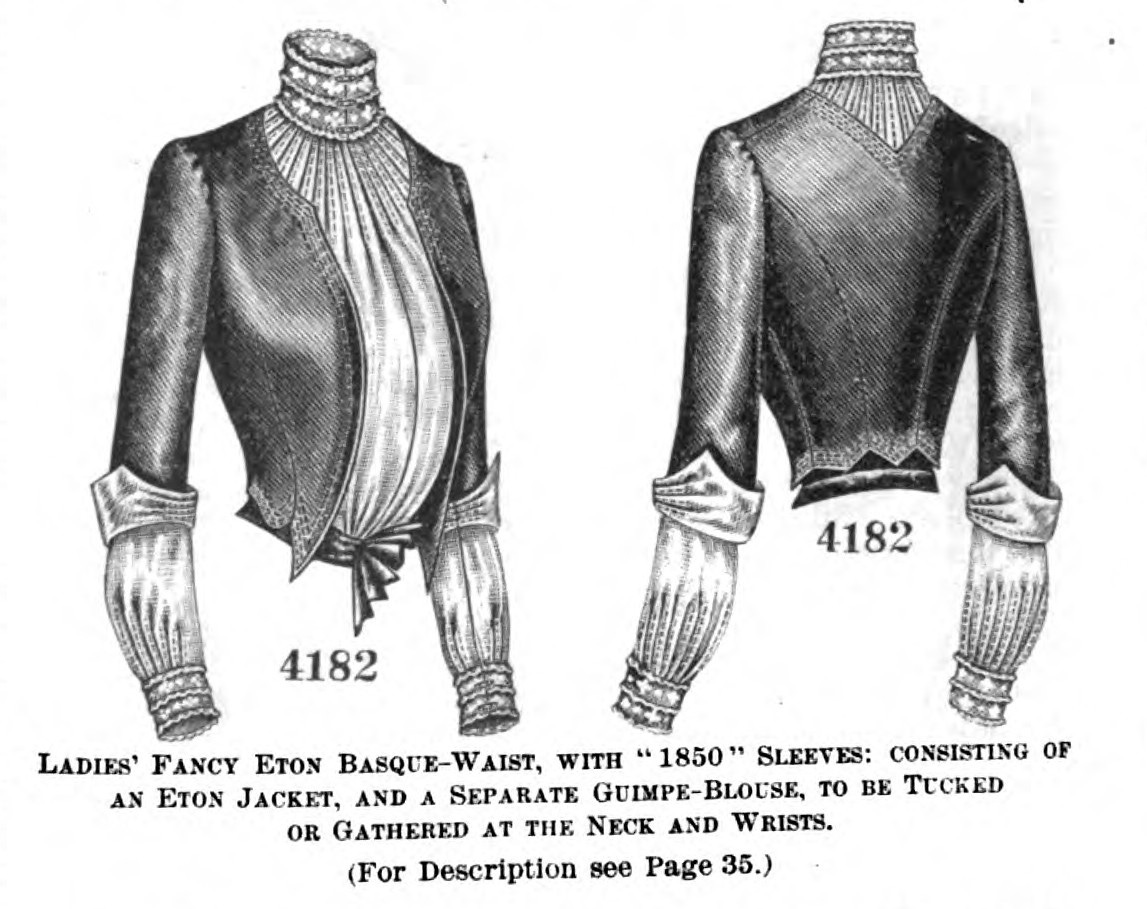


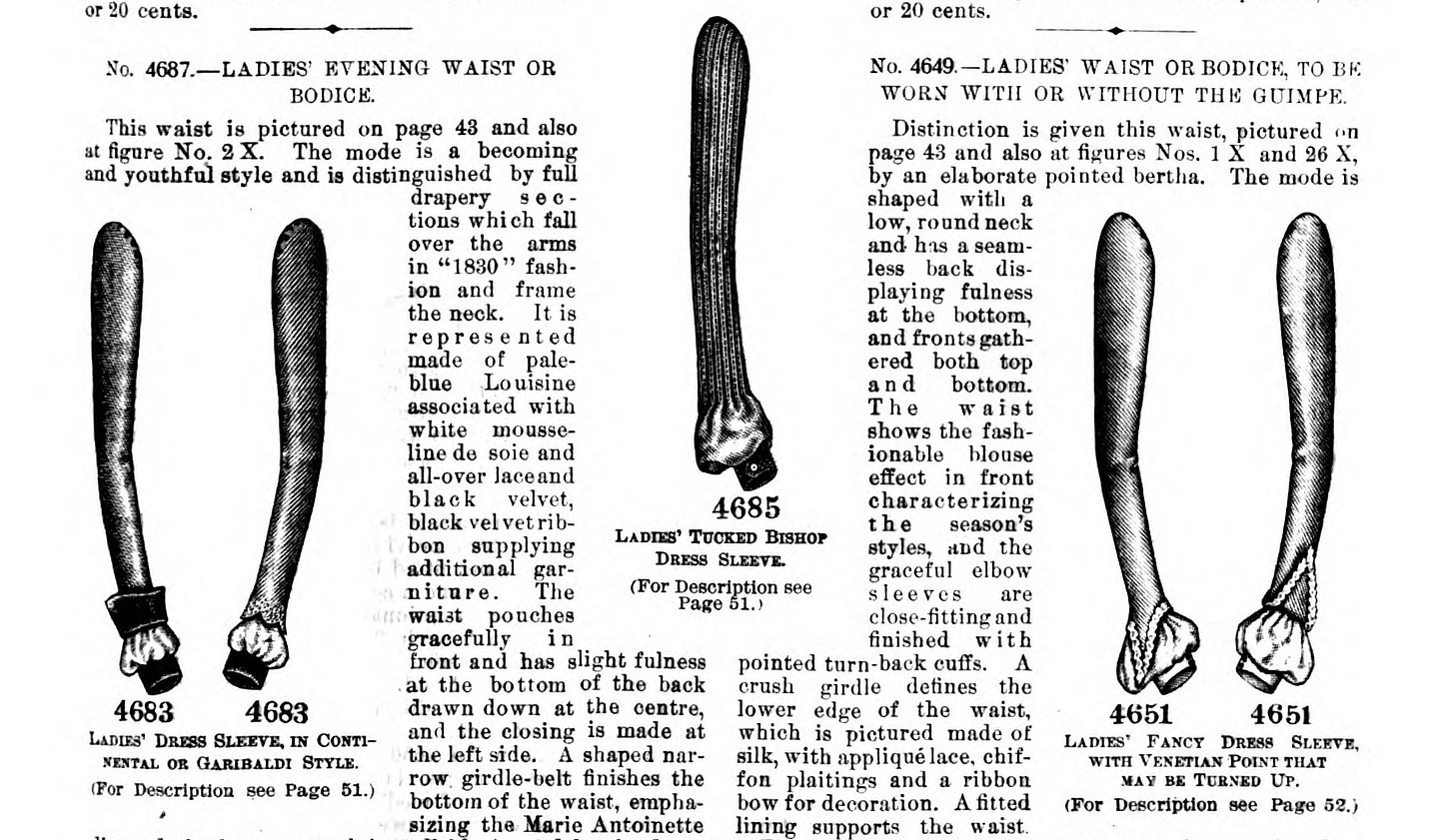
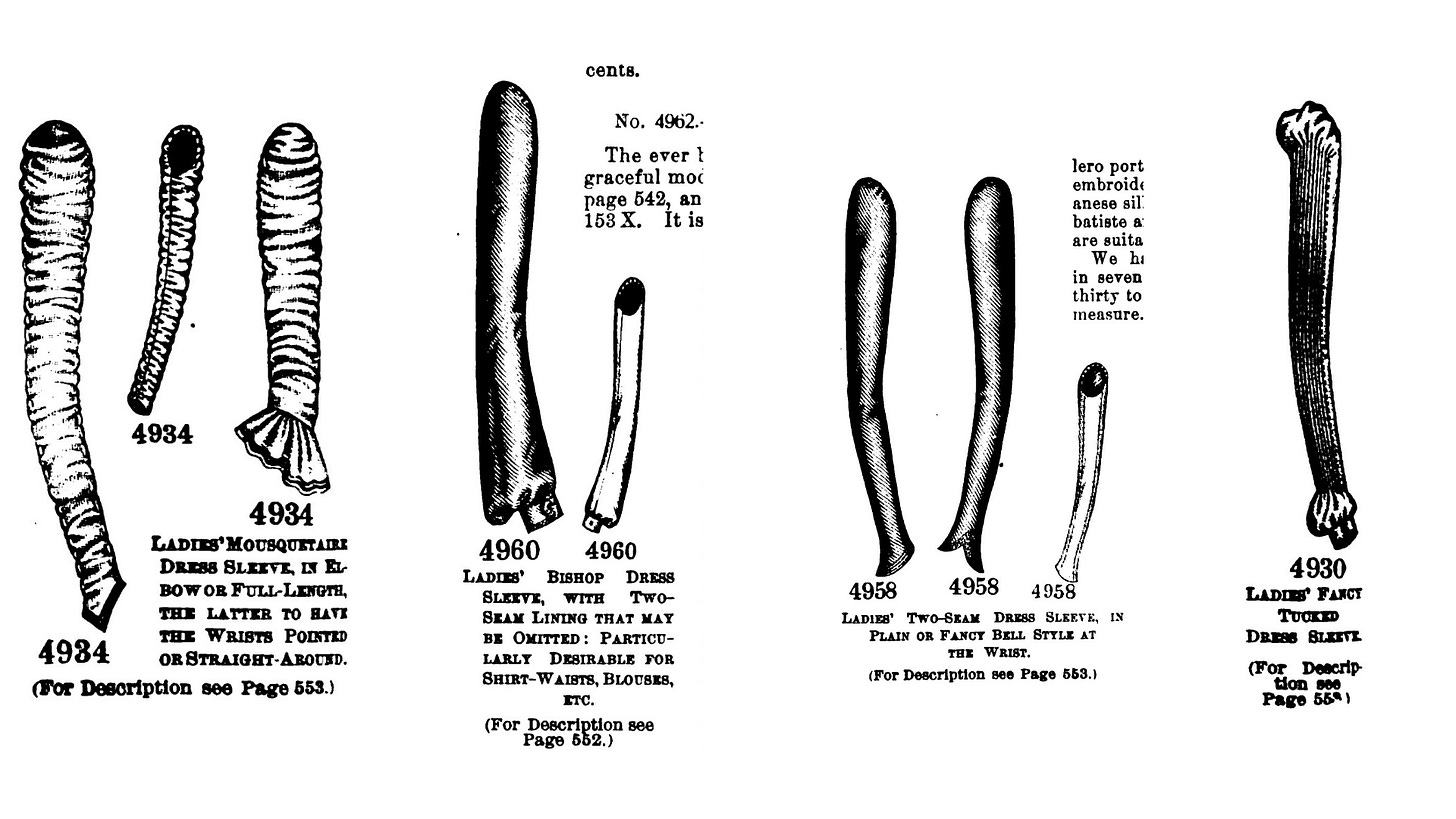
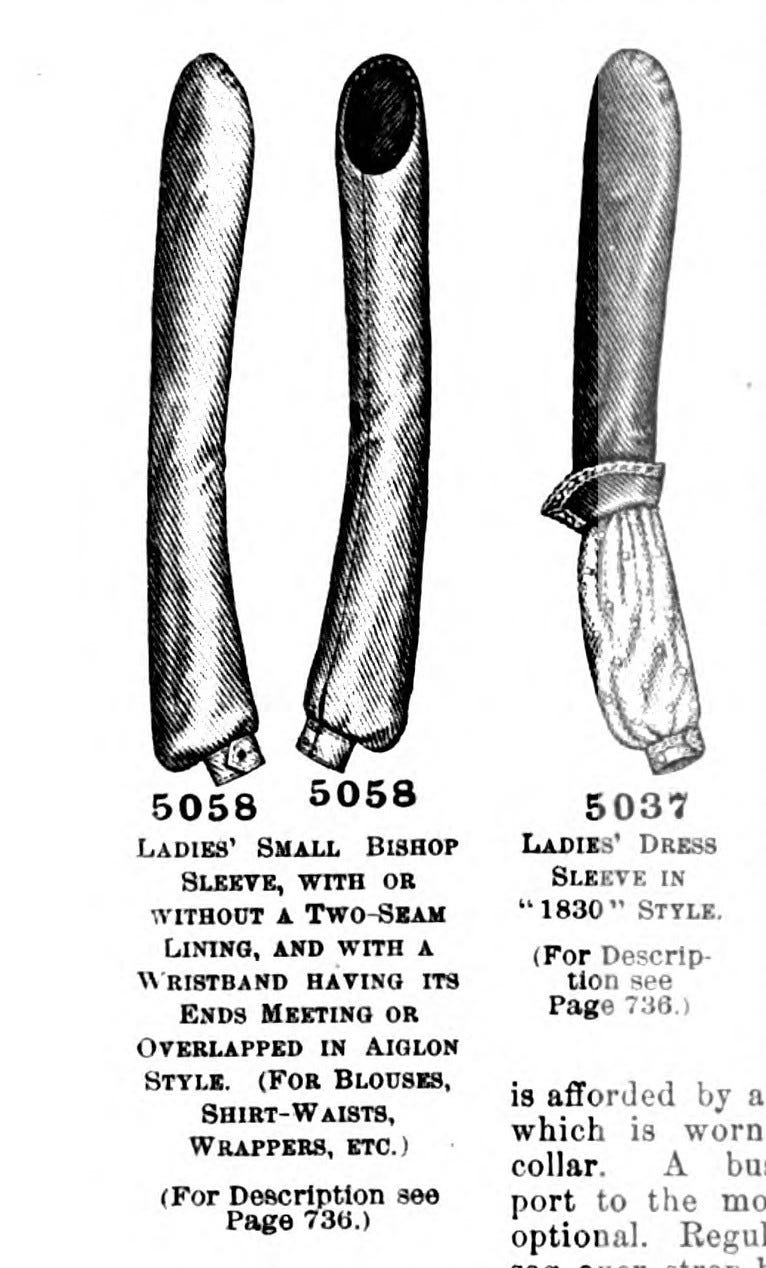
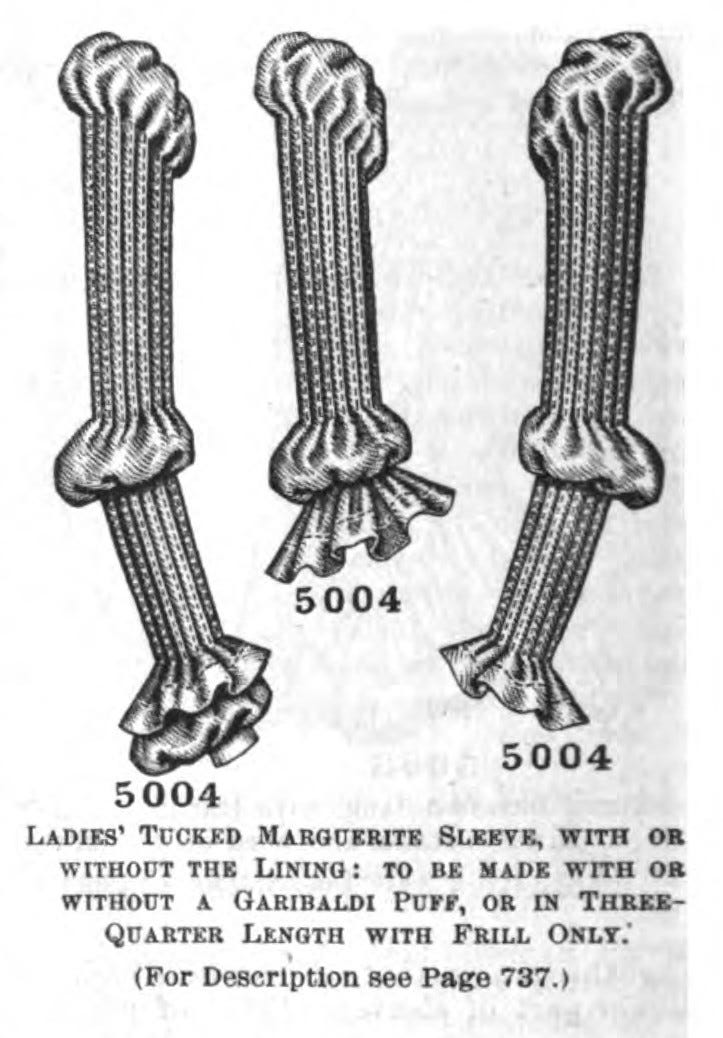
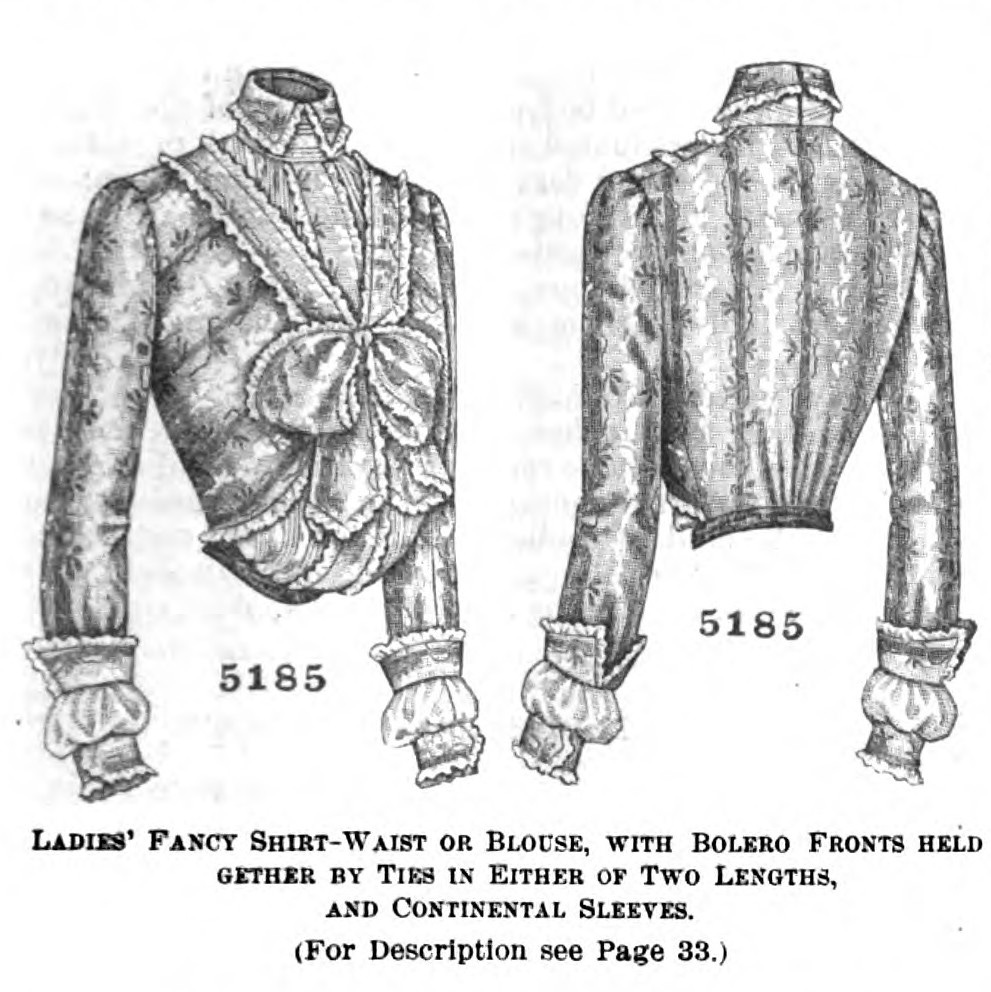


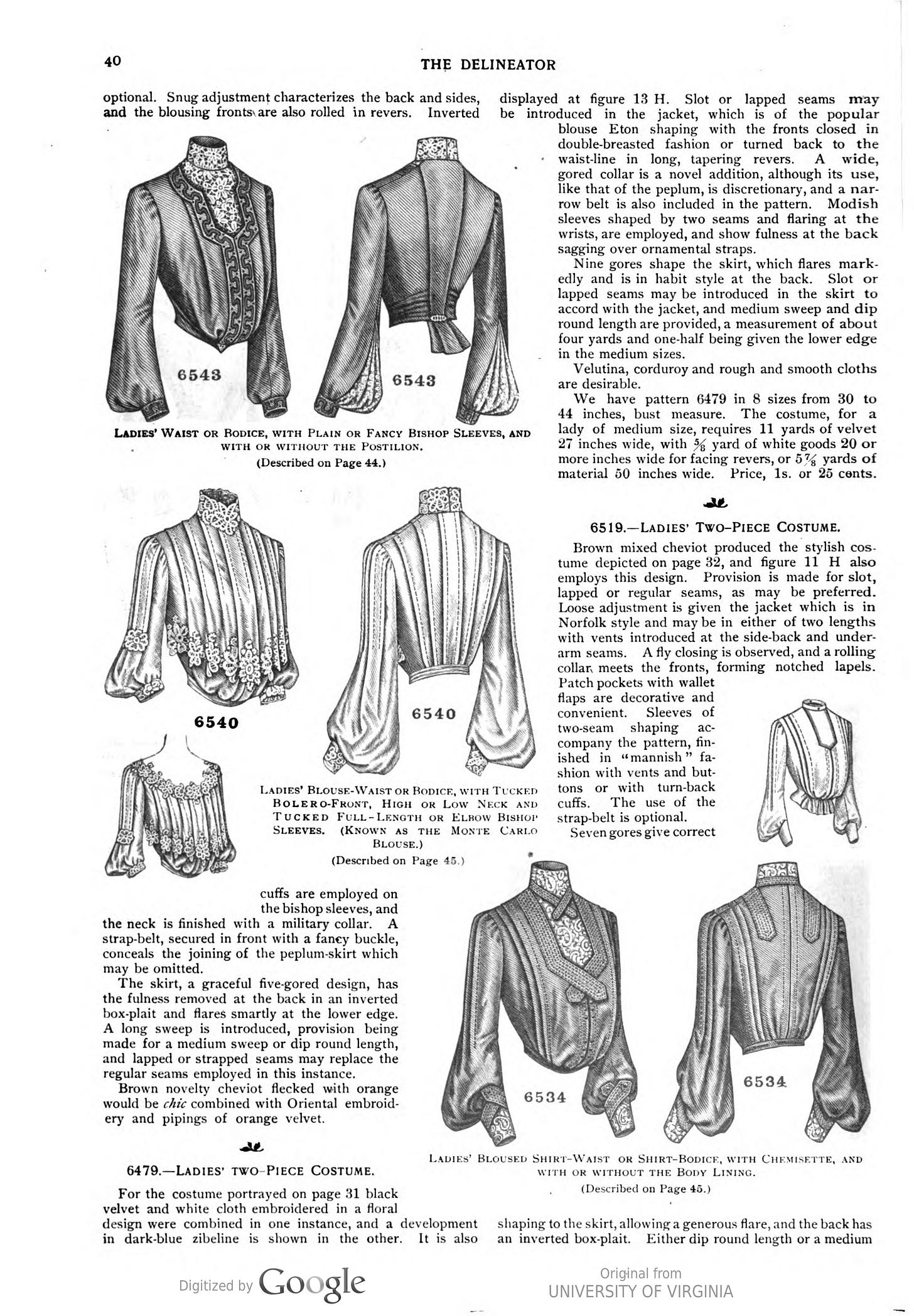




Wow! Goodbye to the close fitted sleeve! I thought my favorite would be the bishop sleeves too but I can't get over the elbow sleeves and the coffee coat! 😍
Thank you so much for this! This article was very helpful.